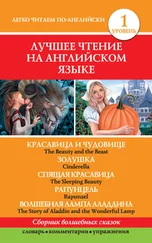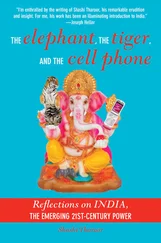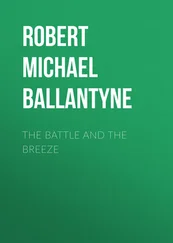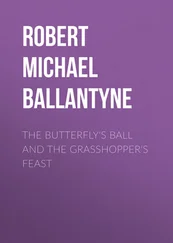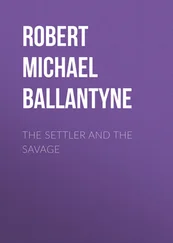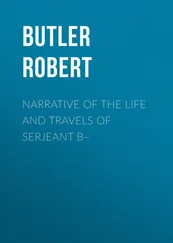Robert Vane Russell - The Tribes and Castes of the Central Provinces of India, Volume 3
Здесь есть возможность читать онлайн «Robert Vane Russell - The Tribes and Castes of the Central Provinces of India, Volume 3» — ознакомительный отрывок электронной книги совершенно бесплатно, а после прочтения отрывка купить полную версию. В некоторых случаях можно слушать аудио, скачать через торрент в формате fb2 и присутствует краткое содержание. Жанр: foreign_prose, История, foreign_edu, foreign_antique, на английском языке. Описание произведения, (предисловие) а так же отзывы посетителей доступны на портале библиотеки ЛибКат.
- Название:The Tribes and Castes of the Central Provinces of India, Volume 3
- Автор:
- Жанр:
- Год:неизвестен
- ISBN:нет данных
- Рейтинг книги:5 / 5. Голосов: 1
-
Избранное:Добавить в избранное
- Отзывы:
-
Ваша оценка:
- 100
- 1
- 2
- 3
- 4
- 5
The Tribes and Castes of the Central Provinces of India, Volume 3: краткое содержание, описание и аннотация
Предлагаем к чтению аннотацию, описание, краткое содержание или предисловие (зависит от того, что написал сам автор книги «The Tribes and Castes of the Central Provinces of India, Volume 3»). Если вы не нашли необходимую информацию о книге — напишите в комментариях, мы постараемся отыскать её.
The Tribes and Castes of the Central Provinces of India, Volume 3 — читать онлайн ознакомительный отрывок
Ниже представлен текст книги, разбитый по страницам. Система сохранения места последней прочитанной страницы, позволяет с удобством читать онлайн бесплатно книгу «The Tribes and Castes of the Central Provinces of India, Volume 3», без необходимости каждый раз заново искать на чём Вы остановились. Поставьте закладку, и сможете в любой момент перейти на страницу, на которой закончили чтение.
Интервал:
Закладка:
R. V. Russell
The Tribes and Castes of the Central Provinces of India, Volume 3
Pronunciation
ahas the sound of uin but or murmur .
āhas the sound of ain bath or tar .
ehas the sound of éin écarté or aiin maid .
ihas the sound of iin bit , or (as a final letter) of yin sulky .
īhas the sound of eein beet .
ohas the sound of oin bore or bowl .
uhas the sound of uin put or bull .
ūhas the sound of ooin poor or boot
The plural of caste names and a few common Hindustāni words is formed by adding s in the English manner according to ordinary usage, though this is not, of course, the Hindustāni plural.
Note.—The rupee contains 16 annas, and an anna is of the same value as a penny. A pice is a quarter of an anna, or a farthing. Rs. 1–8 signifies one rupee and eight annas. A lakh is a hundred thousand, and a krore ten million.
Gadaria
1. General notice
Gadaria, Gādri. 1 1 This article is based on information collected by Mr. Hīra Lāl in Jubbulpore, and the author in Mandla.
—The occupational shepherd caste of northern India. The name is derived from the Hindi gādar and the Sanskrit gandhāra , a sheep, the Sanskrit name being taken from the country of Gandhāra or Kandahār, from which sheep were first brought. The three main shepherd castes all have functional names, that of the Dhangars or Marātha shepherds being derived from dhan , small stock, while the Kuramwārs or Telugu shepherds take their name like the Gadarias from kuruba , a sheep. These three castes are of similar nature and status, and differ only in language and local customs. In 1911 the Gadarias numbered 41,000 persons. They are found in the northern Districts, and appear to have been amongst the earliest settlers in the Nerbudda valley, for they have given their name to several villages, as Gadariakheda and Gādarwāra.
2. Subdivisions
The Gadarias are a very mixed caste. They themselves say that their first ancestor was created by Mahādeo to tend his rams, and that he married three women who were fascinated by the sight of him shearing the sheep. These belonged to the Brāhman, Dhīmar and Barai castes respectively, and became the ancestors of the Nikhar, Dhengar and Barmaiyan subcastes of Gadarias. The Nikhar subcaste are the highest, their name meaning pure. Dhengar is probably, in reality, a corruption of Dhangar, the name of the Marātha shepherd caste. They have other subdivisions of the common territorial type, as Jheria or jungly, applied to the Gadarias of Chhattīsgarh; Desha from desh , country, meaning those who came from northern India; Purvaiya or eastern, applied to immigrants from Oudh; and Mālvi or those belonging to Mālwa. Nikhar and Dhengar men take food together, but not the women; and if a marriage cannot be otherwise arranged these subcastes will sometimes give daughters to each other. A girl thus married is no longer permitted to take food at her father’s house, but she may eat with the women of her husband’s subcaste. Many of their exogamous groups are named after animals or plants, as Hiranwār, from hiran , a deer; Sapha from the cobra, Moria from the peacock, Nāhar from the tiger, Phulsungha, a flower, and so on. Others are the names of Rājpūt septs and of other castes, as Ahirwār (Ahīr) and Bamhania (Brāhman).
Another more ambitious legend derives their origin from the Bania caste. They say that once a Bania was walking along the road with a cocoanut in his hand when Vishnu met him and asked him what it was. The Bania answered that it was a cocoanut. Vishnu said that it was not a cocoanut but wool, and told him to break it, and on breaking the cocoanut the Bania found that it was filled with wool. The Bania asked what he should do with it, and Vishnu told him to make a blanket out of it for the god to sit on. So he made a blanket, and Vishnu said that from that day he should be the ancestor of the Gadaria caste, and earn his bread by making blankets from the wool of sheep. The Bania asked where he should get the sheep from, and the god told him to go home saying ‘ Ehān, Ehān, Ehān ,’ all the way, and when he got home he would find a flock of sheep following him; but he was not to look behind him all the way. And the Bania did so, but when he had almost got home he could not help looking behind him to see if there were really any sheep. And he saw a long line of sheep following him in single file, and at the very end was a ram with golden horns just rising out of the ground. But as he looked it sank back again into the ground, and he went back to Vishnu and begged for it, but Vishnu said that as he had looked behind him he had lost it. And this was the origin of the Gadaria caste, and the Gadarias always say ‘ Ehān, Ehān ,’ as they lead their flocks of sheep and goats to pasture.
3. Marriage customs
Marriage within the clan is forbidden and also the union of first cousins. Girls may be married at any age, and are sometimes united to husbands much younger than themselves. Four castemen of standing carry the proposal of marriage from the boy’s father, and the girl’s father, being forewarned, sends others to meet them. One of the ambassadors opens the conversation by saying, ‘We have the milk and you have the milk-pail; let them be joined.’ To which the girl’s party, if the match be agreeable, will reply, “Yes, we have the tamarind and you have the mango; if the panches agree let there be a marriage.” The boy’s father gives the girl’s father five areca-nuts, and the latter returns them and they clasp each other round the neck. When the wedding procession reaches the bride’s village it is met by their party, and one of them takes the sarota or iron nut-cutter, which the bridegroom holds in his hand, and twirls it about in the air several times. The ceremony is performed by walking round the sacred pole, and the party return to the bridegroom’s lodging, where his brother-in-law fills the bride’s lap with sweetmeats and water-nut as an omen of fertility. The maihar or small wedding-cakes of wheat fried in sesamum oil are distributed to all members of the caste present at the wedding. While the bridegroom’s party is absent at the bride’s house, the women who remain behind enjoy amusements of their own. One of them strips herself naked, tying up her hair like a religious mendicant, and is known as Bāba or holy father. In this state she romps with her companions in turn, while the others laugh and applaud. Occasionally some man hides himself in a place where he can be a witness of their play, but if they discover him he is beaten severely with belnas or wooden bread-rollers. Widow-marriage and divorce are permitted, the widow being usually expected to marry her late husband’s younger brother, whether he already has a wife or not. Sexual offences are not severely reprobated, and may be atoned for by a feast to the caste-fellows.
4. Religion and funeral rites
The Gadarias worship the ordinary Hindu deities and also Dishai Devi, the goddess of the sheep-pen. No Gadaria may go into the sheep-pen with his shoes on. On entering it in the morning they make obeisance to the sheep, and these customs seem to indicate that the goddess Dishai Devi 2 2 The word Dishai really means direction or cardinal point, but as the goddess dwells in the sheep-pen it is probable that she was originally the sheep itself.
is the deified sheep. When the sheep are shorn and the fleeces are lying on the ground they take some milk from one of the ewes and mix rice with it and sprinkle it over the wool. This rite is called Jimai, and they say that it is feeding the wool, but it appears to be really a sacrificial offering to the material. The caste burn the dead when they can afford to do so, and take the bones to the Ganges or Nerbudda, or if this is not practicable, throw them into the nearest stream.
Интервал:
Закладка:
Похожие книги на «The Tribes and Castes of the Central Provinces of India, Volume 3»
Представляем Вашему вниманию похожие книги на «The Tribes and Castes of the Central Provinces of India, Volume 3» списком для выбора. Мы отобрали схожую по названию и смыслу литературу в надежде предоставить читателям больше вариантов отыскать новые, интересные, ещё непрочитанные произведения.
Обсуждение, отзывы о книге «The Tribes and Castes of the Central Provinces of India, Volume 3» и просто собственные мнения читателей. Оставьте ваши комментарии, напишите, что Вы думаете о произведении, его смысле или главных героях. Укажите что конкретно понравилось, а что нет, и почему Вы так считаете.

